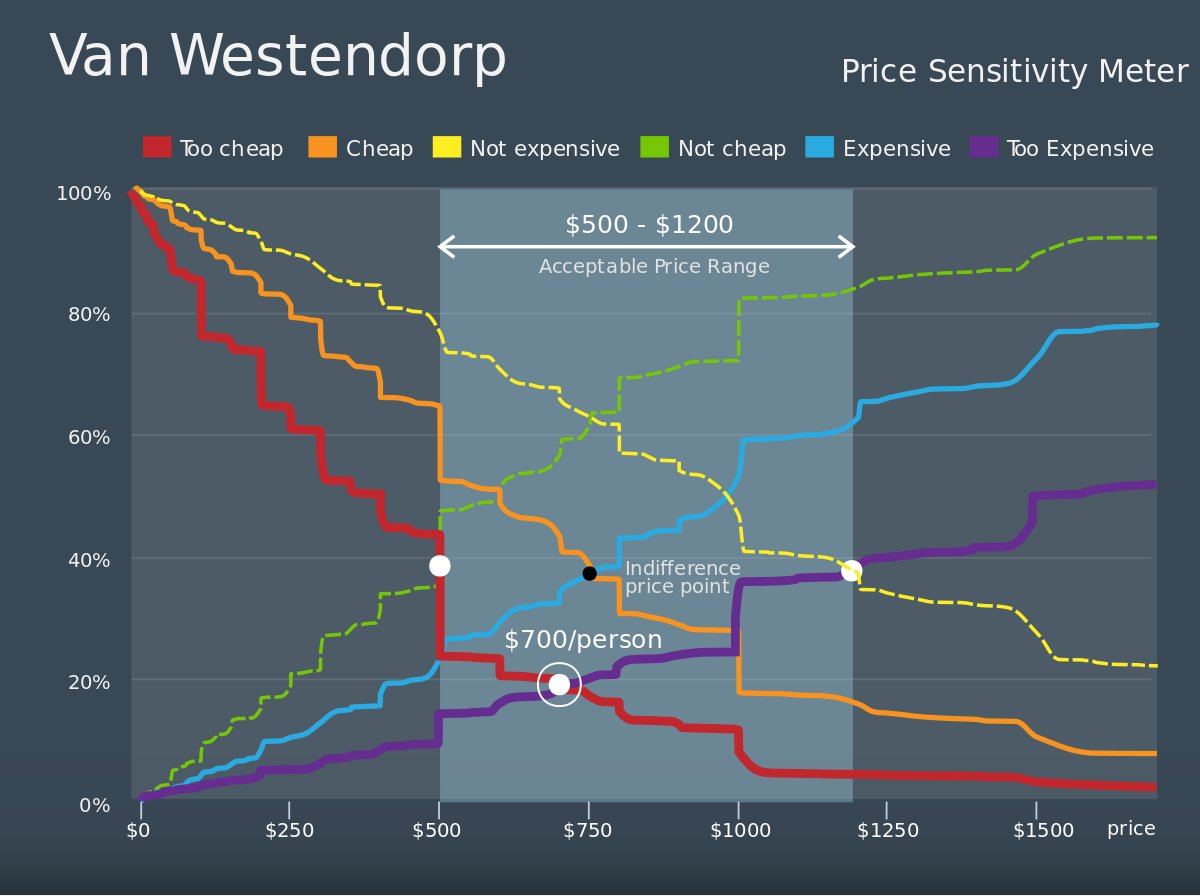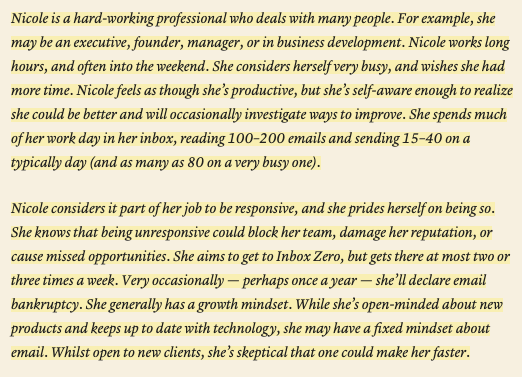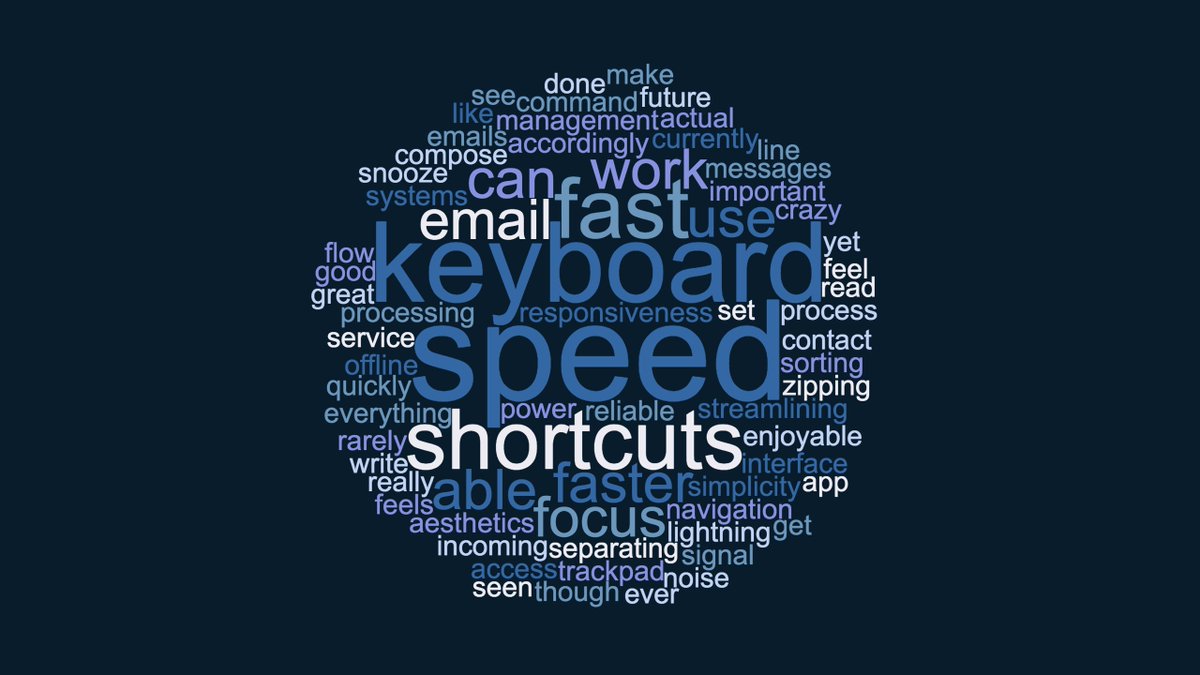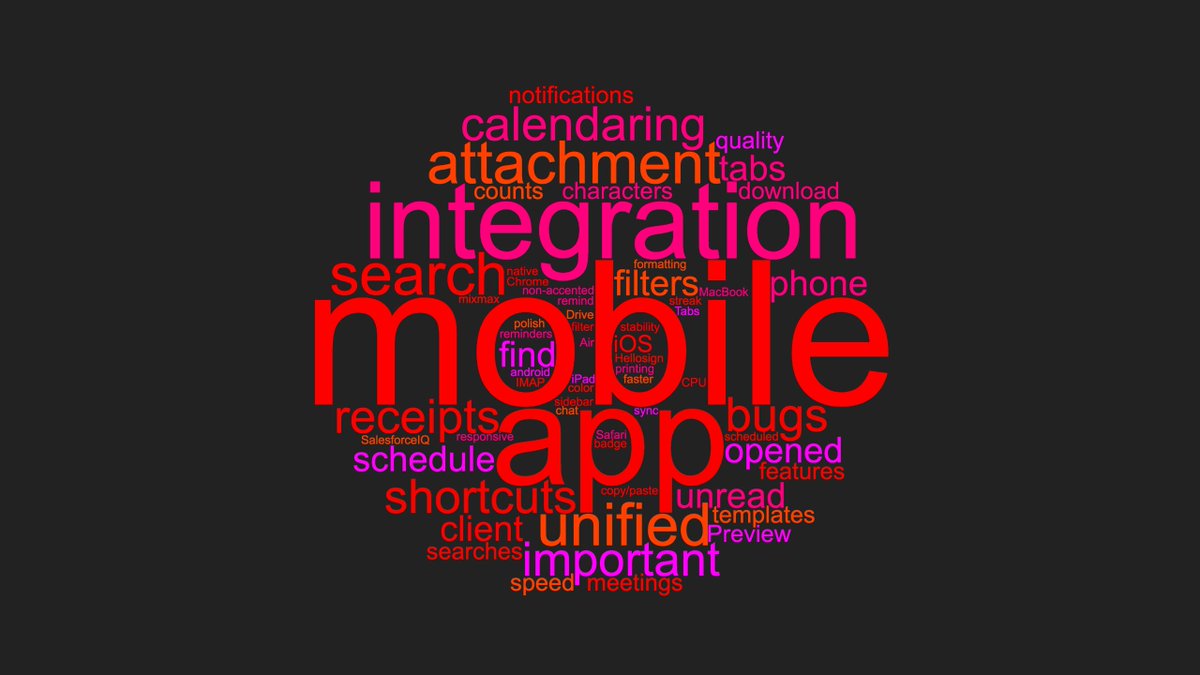One company that FASCINATES me: @Superhuman
After hearing CEO @rahulvohra speak with @patrick_oshag and @jason, I dug deeper into how they operate.
Here& #39;s everything I learned on:
• Pricing
• Positioning
• Onboarding
• Product design
• Product-market fit
MEGATHREAD... https://abs.twimg.com/emoji/v2/... draggable="false" alt="👇🏼" title="Rückhand Zeigefinger nach unten (mittelheller Hautton)" aria-label="Emoji: Rückhand Zeigefinger nach unten (mittelheller Hautton)">
https://abs.twimg.com/emoji/v2/... draggable="false" alt="👇🏼" title="Rückhand Zeigefinger nach unten (mittelheller Hautton)" aria-label="Emoji: Rückhand Zeigefinger nach unten (mittelheller Hautton)">
After hearing CEO @rahulvohra speak with @patrick_oshag and @jason, I dug deeper into how they operate.
Here& #39;s everything I learned on:
• Pricing
• Positioning
• Onboarding
• Product design
• Product-market fit
MEGATHREAD...
1/ If you& #39;ve never heard of @Superhuman:
• The world& #39;s fastest email experience
• Email for people where work is email and email is work
• Completely keyboard-based
• Rounds raised from @Jason/ @firstround/ @a16z
• 250,000 person waitlist
• Personal onboarding for EVERY user
• The world& #39;s fastest email experience
• Email for people where work is email and email is work
• Completely keyboard-based
• Rounds raised from @Jason/ @firstround/ @a16z
• 250,000 person waitlist
• Personal onboarding for EVERY user
2/ Product design as game design
Most products are built for what users WANT.
Game design focuses on how users FEEL.
The five components of game design:
• Goals
• Emotions
• Toys
• Control
• Flow
We play with toys, but we play games.
The best games are made with toys.
Most products are built for what users WANT.
Game design focuses on how users FEEL.
The five components of game design:
• Goals
• Emotions
• Toys
• Control
• Flow
We play with toys, but we play games.
The best games are made with toys.
3/ Positioning
Before you can price something, clearly define its positioning.
" @Superhuman is for founders, CEOs, and managers of high-growth technology companies who feel like their work is mostly email. For them, Superhuman is the fastest email experience ever made."
Before you can price something, clearly define its positioning.
" @Superhuman is for founders, CEOs, and managers of high-growth technology companies who feel like their work is mostly email. For them, Superhuman is the fastest email experience ever made."
4/ Pricing
To price @Superhuman, @rahulvohra asked users:
At what price is @Superhuman:
• Too expensive to consider buying?
• So cheap that you would worry it is low quality?
• Starting to get expensive where you& #39;d have to think before buying?
• An absolute bargain?
To price @Superhuman, @rahulvohra asked users:
At what price is @Superhuman:
• Too expensive to consider buying?
• So cheap that you would worry it is low quality?
• Starting to get expensive where you& #39;d have to think before buying?
• An absolute bargain?
5/
Most startups focus on the fourth question. Premium products focus on the second question.
Superhuman positioned itself as a premium product. The median answer to question #3 was $29.
But prices ending in 9 signal value. Round numbers signal premium.
The result: $30/mo.
Most startups focus on the fourth question. Premium products focus on the second question.
Superhuman positioned itself as a premium product. The median answer to question #3 was $29.
But prices ending in 9 signal value. Round numbers signal premium.
The result: $30/mo.
6/ Product-market fit
@rahulvohra wrote the playbook on finding product-market fit.
They started with a survey asking:
"How would you feel if you could not longer use the product?"
They started measuring the percent of people who answer "very disappointed."
The goal: 40%.
@rahulvohra wrote the playbook on finding product-market fit.
They started with a survey asking:
"How would you feel if you could not longer use the product?"
They started measuring the percent of people who answer "very disappointed."
The goal: 40%.
7/
Their survey asked four total questions.
1. How would you feel if you could not longer use the product?
2. What type of person do you think would benefit from Superhuman?
3. What is the main benefit you receive from Superhuman?
4. How can we improve Superhuman for you?
Their survey asked four total questions.
1. How would you feel if you could not longer use the product?
2. What type of person do you think would benefit from Superhuman?
3. What is the main benefit you receive from Superhuman?
4. How can we improve Superhuman for you?
8/
This is where things get interesting.
First, they honed in on the users who would be "very disappointed" without Superhuman.
With those users, they crafted a persona for the type of person they described in question #2.
This is the ideal @Superhuman user they would target
This is where things get interesting.
First, they honed in on the users who would be "very disappointed" without Superhuman.
With those users, they crafted a persona for the type of person they described in question #2.
This is the ideal @Superhuman user they would target
9/
With this persona defined, they dug deeper to improve the product.
Their product improvement came down to:
1. Doubling down on what the hardcore users loved most.
2. Building features that would nudge the on-the-fence users all the way in.
So how did they find these?
With this persona defined, they dug deeper to improve the product.
Their product improvement came down to:
1. Doubling down on what the hardcore users loved most.
2. Building features that would nudge the on-the-fence users all the way in.
So how did they find these?
10/
To find the features that hardcore users loved, they segmented their audience.
They looked at answers to question #3 for anyone who would be "very disappointed." without Superhuman.
The result? They loved speed.
So they doubled down on it.
To find the features that hardcore users loved, they segmented their audience.
They looked at answers to question #3 for anyone who would be "very disappointed." without Superhuman.
The result? They loved speed.
So they doubled down on it.
11/
To find features to turn everyday users into devoted users, they segmented again.
They grouped anyone whose answer to question #1 was "somewhat disappointed" who also saw "speed" as its best feature.
Then they looked at what those users wanted most.
The result? Mobile.
To find features to turn everyday users into devoted users, they segmented again.
They grouped anyone whose answer to question #1 was "somewhat disappointed" who also saw "speed" as its best feature.
Then they looked at what those users wanted most.
The result? Mobile.
12/ Product on-boarding
Superhuman has a 250,000 person wait list.
Why?
Because they carefully choose their users. And every new users gets a PERSONAL onboarding.
They do this for two reasons:
• Lets them pick their users
• Allows them find bugs and record feedback.
Superhuman has a 250,000 person wait list.
Why?
Because they carefully choose their users. And every new users gets a PERSONAL onboarding.
They do this for two reasons:
• Lets them pick their users
• Allows them find bugs and record feedback.
13/
By vetting their users, they unlock
• More committed users.
• Higher net promoter scores.
• Lower churn.
• Genuine word-of-mouth vitality.
By keeping a tight bug/feature feedback loop, they create:
• A reputation for rapid product iteration.
• Stable user retention.
By vetting their users, they unlock
• More committed users.
• Higher net promoter scores.
• Lower churn.
• Genuine word-of-mouth vitality.
By keeping a tight bug/feature feedback loop, they create:
• A reputation for rapid product iteration.
• Stable user retention.
14/
An example onboarding:
1. Demo @Superhuman.
2. Remind them it& #39;s a paid product/measure price sensitivity.
3. Ask how they do their email.
4. Show them how to use Superhuman.
5. Do email for 30 minutes.
6. Leave them a gift.
The best part: @rahulvohra did thousands himself.
An example onboarding:
1. Demo @Superhuman.
2. Remind them it& #39;s a paid product/measure price sensitivity.
3. Ask how they do their email.
4. Show them how to use Superhuman.
5. Do email for 30 minutes.
6. Leave them a gift.
The best part: @rahulvohra did thousands himself.
15/ Designing for flow state
Superhuman makes email flow-inducing.
To make a flow-inducing product, you need to clearly define:
• What flow inducing activities are
• What are the preconditions for generating them
Definitions below https://abs.twimg.com/emoji/v2/... draggable="false" alt="👇🏼" title="Rückhand Zeigefinger nach unten (mittelheller Hautton)" aria-label="Emoji: Rückhand Zeigefinger nach unten (mittelheller Hautton)">
https://abs.twimg.com/emoji/v2/... draggable="false" alt="👇🏼" title="Rückhand Zeigefinger nach unten (mittelheller Hautton)" aria-label="Emoji: Rückhand Zeigefinger nach unten (mittelheller Hautton)">
Superhuman makes email flow-inducing.
To make a flow-inducing product, you need to clearly define:
• What flow inducing activities are
• What are the preconditions for generating them
Definitions below
16/
Flow inducing activities are:
• So absorbing you can only focus on the now.
• So demanding you don& #39;t care what others think.
• So easy you know what to do next.
• So powerful it alters our subjective experience.
• So rewarding it becomes intrinsically motivating.
Flow inducing activities are:
• So absorbing you can only focus on the now.
• So demanding you don& #39;t care what others think.
• So easy you know what to do next.
• So powerful it alters our subjective experience.
• So rewarding it becomes intrinsically motivating.
17/
To generate a flow state, there are five preconditions:
We must:
• Know what to do next.
• Know how to do it.
• Be free from distractions.
• Get clear and immediate feedback.
• Feel a balance between challenge and skill.
To generate a flow state, there are five preconditions:
We must:
• Know what to do next.
• Know how to do it.
• Be free from distractions.
• Get clear and immediate feedback.
• Feel a balance between challenge and skill.
18/ @rahulvohra& #39;s approach to VC investing
Invest in founders that:
• Know how to make a product people want.
• Know how to make people know they want it.
• Have exceptionally high levels of grit, passion, and perseverance.
• Have an idea with billion-dollar potential.
Invest in founders that:
• Know how to make a product people want.
• Know how to make people know they want it.
• Have exceptionally high levels of grit, passion, and perseverance.
• Have an idea with billion-dollar potential.
19/ If you found this thread valuable, I send a weekly newsletter with thoughts/links on growth of all kinds:
- Mental growth
- Physical growth
- Network growth
- Personal growth
- Business growth
- Intellectual growth
- Productivity growth
Subscribe https://abs.twimg.com/emoji/v2/... draggable="false" alt="👇🏼" title="Rückhand Zeigefinger nach unten (mittelheller Hautton)" aria-label="Emoji: Rückhand Zeigefinger nach unten (mittelheller Hautton)"> http://dickiebush.substack.com/subscribe ">https://dickiebush.substack.com/subscribe...
https://abs.twimg.com/emoji/v2/... draggable="false" alt="👇🏼" title="Rückhand Zeigefinger nach unten (mittelheller Hautton)" aria-label="Emoji: Rückhand Zeigefinger nach unten (mittelheller Hautton)"> http://dickiebush.substack.com/subscribe ">https://dickiebush.substack.com/subscribe...
- Mental growth
- Physical growth
- Network growth
- Personal growth
- Business growth
- Intellectual growth
- Productivity growth
Subscribe

 Read on Twitter
Read on Twitter





